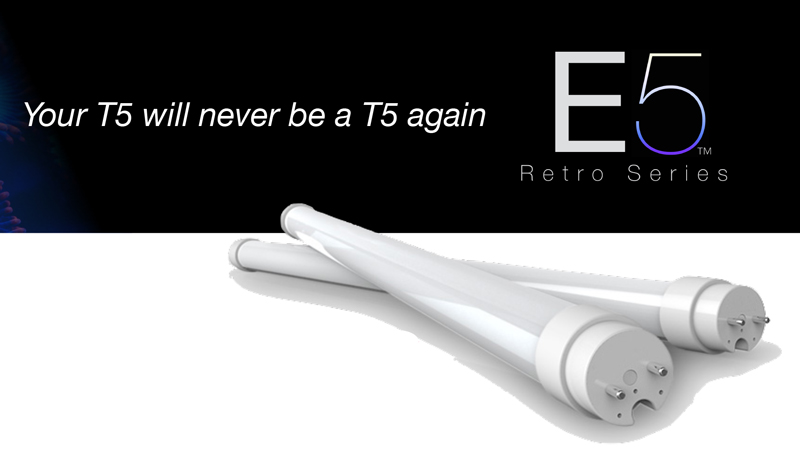E5 Retro Series LED tubes are a new light from Euroquatics which are directly swappable with high output T5 fluorescent tubes. If you’ve ever wanted to use LEDs but are already heavily invested in a T5HO fixture, the Euroquatics E5 Retro Series give you no more excuses to at least dabble in light emitting diodes.
You’ve probably seen LEDs in tubes of various formats, and many that even look just like existing T8 and T10 fluorescent tubes. But most of what’s been available on the market are tubes that can fit in the same places as fluorescent tubes, but they only work and are safe to use after the fixture has been rewired to direct your house voltage directly to the pins for the tubes.

Euroquatics E5 Retro Tube LEDs are fairly different in that they are directly hot-swappable with T5 high output tubes. Euroquatics claims that the E5 Retro Tubes have the same power output as existing high output T5s, but with a 45% reduction in power draw, and lasting up to eight years.
The new direct T5 replacement LED tubes will be available in four sizes and five different color. The colors of the E5 Retro Tube LED will be in a warm daylight, daylight, cool daylight, blue pop and marine pink while th size and powers will include 15 watt 24″, 23 watt 36″, 30 watt 48″ and 40 watt 60 inch tubes.
High output T5 fluorescent tubes are still a very popular form of aquarium lighting, especially for reef tanks, and many older reefer still prefer T5HO to anything else. With Euroquatics E5 Retro Series the T5HO stallwarts will be able to dabble in the newer light emitting diode technology and the colors and energy savings they offer, while still relying on phosphors for the primary source of light.
The real tale of the tape will be how much the E5 Retro Series actually cost, and how they make corals in real life. Euroquatics plans to unveil their E5 Retro Series LED at ReefAPalloza in SoCal in a coupe weeks, and we can’t wait to see how these tubes hold up and compare to our precious glass lighting tubes.



